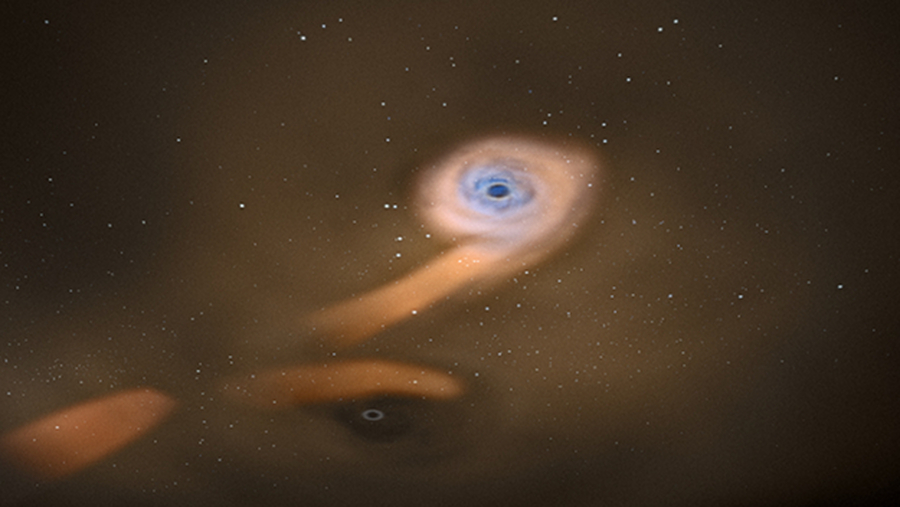
 Credit: ESA - C. Carreau
Credit: ESA - C. Carreau
Binary Blackness
Many if not most stars in the sky are actually binaries, two stars bound in orbit around each other by their mutual gravity, and sometimes coming close enough to interact. Galaxies, too, often occur in binary pairs, dancing around each other and exchanging material, as do compact objects like white dwarfs, neutron stars and even stellar mass black holes. But what about the most extreme objects, supermassive black holes at the centers of galaxies? Even some supermassive black holes in active galaxies have been identified to have a companion black hole. Now, using the XMM-Newton X-ray observatory, astronomers have for the first time identified a binary supermassive black hole system residing in a normal galaxy. The galaxy is called SDSS J120136.02+300305.5, and it came to the notice of astronomers when XMM-Newton, moving from one target to the next, just happened to see signs that a supermassive black hole in the galaxy was in the process of swallowing a star. When a black hole gobbles a star, lots of X-rays are emitted as the black hole rips the star apart, and these X-rays were seen by XMM-Newton. Followup observations by XMM-Newton showed a strange thing: the X-ray emission from this event seemed to disappear for some time after the discovery, only to reappear about 48 days after the discovery. Astronomers interpret this drop as due to the intefering gravitational tug of a nearby supermassive black hole, which for a brief period of time could have shut off the accretion of the star by the first black hole. The picture above shows an artist's rendition of this binary black hole system. These two black holes should eventually spiral together and merge, due to the production of gravity waves by the black holes as they move in their orbits. The eventual merger may, for a brief time, generate the strongest source of gravitational radiation in the Universe.
Published: July 7, 2014
<
HEA Dictionary ● Archive
● Search HEAPOW
● Other Languages
● HEAPOW on Facebook
● Download all Images
● Education ● HEAD
>

Each week the HEASARC
brings you new, exciting and beautiful images from X-ray and Gamma ray
astronomy. Check back each week and be sure to check out the HEAPOW archive!
Page Author: Dr. Michael F. Corcoran
Last modified Monday, 26-Feb-2024 17:20:39 EST


